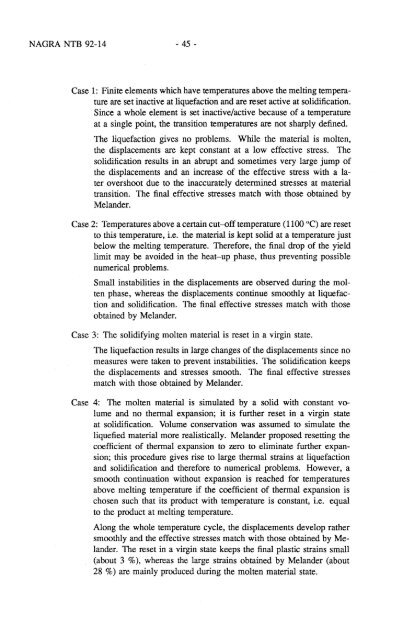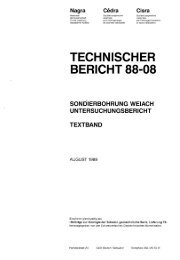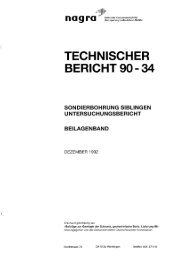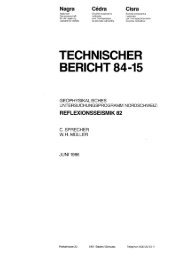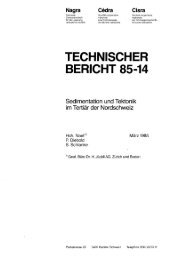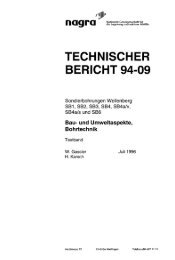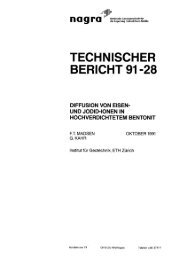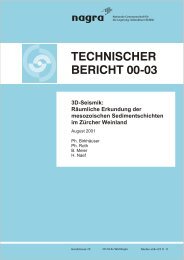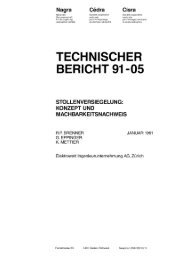TECHNICAL REPORT 92-14 - Nagra
TECHNICAL REPORT 92-14 - Nagra
TECHNICAL REPORT 92-14 - Nagra
Create successful ePaper yourself
Turn your PDF publications into a flip-book with our unique Google optimized e-Paper software.
NAGRA NTB <strong>92</strong>-<strong>14</strong> - 45 -<br />
Case 1: Finite elements which have temperatures above the melting temperature<br />
are set inactive at liquefaction and are reset active at solidification.<br />
Since a whole element is set inactive/active because of a temperature<br />
at a single point, the transition temperatures are not sharply defined.<br />
The liquefaction gives no problems. While the material is molten,<br />
the displacements are kept constant at a low effective stress. The<br />
solidification results in an abrupt and sometimes very large jump of<br />
the displacements and an increase of the effective stress with a later<br />
overshoot due to the inaccurately determined stresses at material<br />
transition. The final effective stresses match with those obtained by<br />
Melander.<br />
Case 2: Temperatures above a certain cut-off temperature (1100 °C) are reset<br />
to this temperature, i.e. the material is kept solid at a temperature just<br />
below the melting temperature. Therefore, the final drop of the yield<br />
limit may be avoided in the heat-up phase, thus preventing possible<br />
numerical problems.<br />
Small instabilities in the displacements are observed during the molten<br />
phase, whereas the displacements continue smoothly at liquefaction<br />
and solidification. The final effective stresses match with those<br />
obtained by Melander.<br />
Case 3: The solidifying molten material is reset in a virgin state.<br />
The liquefaction results in large changes of the displacements since no<br />
measures were taken to prevent instabilities. The solidification keeps<br />
the displacements and stresses smooth. The final effective stresses<br />
match with those obtained by Melander.<br />
Case 4: The molten material is simulated by a solid with constant volume<br />
and no thennal expansion; it is further reset in a virgin state<br />
at solidification. Volume conservation was assumed to simulate the<br />
liquefied material more realistically. Melander proposed resetting the<br />
coefficient of thennal expansion to zero to eliminate further expansion;<br />
this procedure gives rise to large thermal strains at liquefaction<br />
and solidification and therefore to numerical problems. However, a<br />
smooth continuation without expansion is reached for temperatures<br />
above melting temperature if the coefficient of thermal expansion is<br />
chosen such that its product with temperature is constant, i.e. equal<br />
to the product at melting temperature.<br />
Along the whole temperature cycle, the displacements develop rather<br />
smoothly and the effective stresses match with those obtained by Melander.<br />
The reset in a virgin state keeps the final plastic strains small<br />
(about 3 %), whereas the large strains obtained by Melander (about<br />
28 %) are mainly produced during the molten material state.


